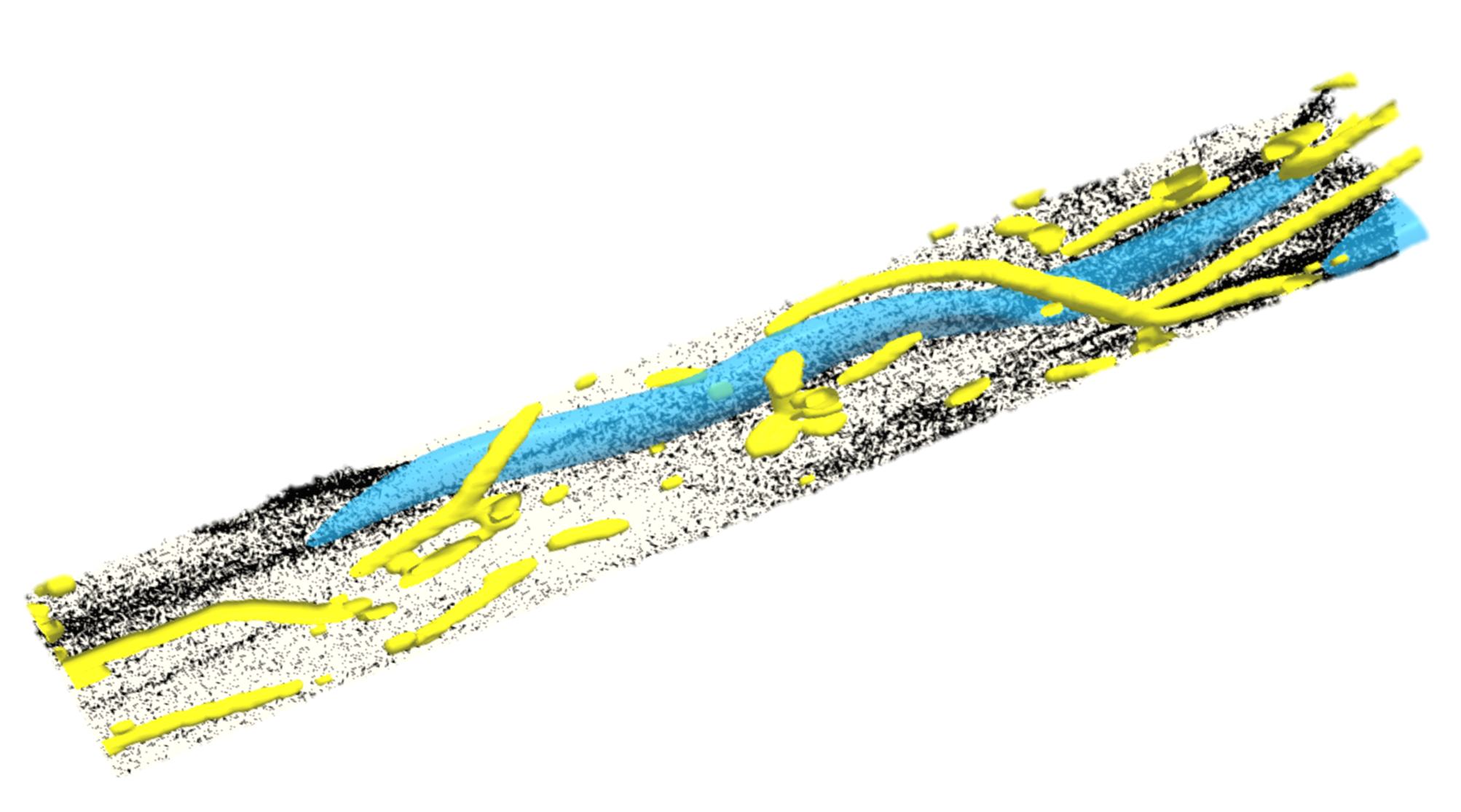Multiphase Developed Turbulence Explored Using Numerical Simulations
JAXA Supercomputer System Annual Report February 2021-January 2022
Report Number: R21EACA50
Subject Category: JSS Inter-University Research
- Responsible Representative: Yutaro Motoori, Assistant Professor, Osaka University
- Contact Information: Yutaro Motoori (y.motoori.es@osaka-u.ac.jp)
- Members: Yutaro Motoori
Abstract
Turbulence is ubiquitous in many phenomena around us. Since turbulent flow mixes and diffuses mass rapidly, it is important to understand the transport phenomena by turbulence in many systems. In the present study, we reveal the transport mechanism of particles in fully developed inhomogeneous turbulence. For this purpose, we investigate the motions of inertial particles and finite-size particles based on the coherent structures in wall turbulence.
Reference URL
N/A
Reasons and benefits of using JAXA Supercomputer System
Multiphase turbulent flow is one of the most important research topics in the aerospace engineering. Direct numerical simulations of multiphase turbulence require a sufficient amount of computational resources. These are the reason why we used the present supercomputer system.
Achievements of the Year
We have conducted direct numerical simulations of inertial particles and finite-size particles in turbulent channel flow to show that the transport phenomenon can be well described in terms of the coherent structures in wall turbulence. An example of that is shown in Fig. 1. We see the coherent structures near the wall: quasi-streamwise vortices (yellow) and low-speed streaks (blue). In high-Reynolds-number turbulence, since different-size coherent structures emerge, there exists a hierarchy composed of them. Inertial particles tend to be swept out from quasi-streamwise vortices with turnover time comparable to the velocity relaxation time of the particles. The nearby low-speed streak then attracts these particles. The figure shows the result for short-relaxation-time particles, but we also see the same phenomenon for longer-relaxation-time particles; namely, they are swept out from larger-size quasi-streamwise vortices (with the turnover time comparable to the relaxation time) and accumulated into the nearby larger-size low-speed streaks. Thus, inertial particles form multiscale clusters.

Fig.1: Inertial particles and coherent structures (yellow, quasi-streamwise vortices; blue, low-speed streaks) in wall turbulence. Yellow objects are the positive isosurfaces of the second invariant of the velocity gradient tensor and blue ones are the negative isosurfaces of the streamwise velocity. We see that particles are accumulated into the low-speed streak.
Publications
– Peer-reviewed papers
1. Yutaro Motoori, Susumu Goto, Hierarchy of coherent structures and real-space energy transfer in turbulent channel flow, J. Fluid Mech. 911 (2021) A27.
2. Yutaro Motoori, ChiKuen Wong, Susumu Goto, Role of the hierarchy of coherent structures in the transport of heavy small particles in turbulent channel flow, J. Fluid Mech. 942 (2022) A3.
– Oral Presentations
1. Yutaro Motoori, Susumu Goto, Hierarchy of coherent structures and energy cascade in wall-bounded turbulence, 25th International Congress of Theoretical and Applied Mechanics (ICTAM25), Milano.
Usage of JSS
Computational Information
- Process Parallelization Methods: MPI
- Thread Parallelization Methods: OpenMP
- Number of Processes: 64 – 128
- Elapsed Time per Case: 100 Hour(s)
JSS3 Resources Used
Fraction of Usage in Total Resources*1(%): 0.01
Details
Please refer to System Configuration of JSS3 for the system configuration and major specifications of JSS3.
| System Name | CPU Resources Used(Core x Hours) | Fraction of Usage*2(%) |
|---|---|---|
| TOKI-SORA | 303778.29 | 0.01 |
| TOKI-ST | 0.00 | 0.00 |
| TOKI-GP | 0.00 | 0.00 |
| TOKI-XM | 0.00 | 0.00 |
| TOKI-LM | 0.00 | 0.00 |
| TOKI-TST | 0.00 | 0.00 |
| TOKI-TGP | 0.00 | 0.00 |
| TOKI-TLM | 0.00 | 0.00 |
| File System Name | Storage Assigned(GiB) | Fraction of Usage*2(%) |
|---|---|---|
| /home | 500.00 | 0.50 |
| /data and /data2 | 10240.00 | 0.11 |
| /ssd | 100.00 | 0.03 |
| Archiver Name | Storage Used(TiB) | Fraction of Usage*2(%) |
|---|---|---|
| J-SPACE | 0.00 | 0.00 |
*1: Fraction of Usage in Total Resources: Weighted average of three resource types (Computing, File System, and Archiver).
*2: Fraction of Usage:Percentage of usage relative to each resource used in one year.
ISV Software Licenses Used
| ISV Software Licenses Used(Hours) | Fraction of Usage*2(%) | |
|---|---|---|
| ISV Software Licenses(Total) | 0.00 | 0.00 |
*2: Fraction of Usage:Percentage of usage relative to each resource used in one year.
JAXA Supercomputer System Annual Report February 2021-January 2022


